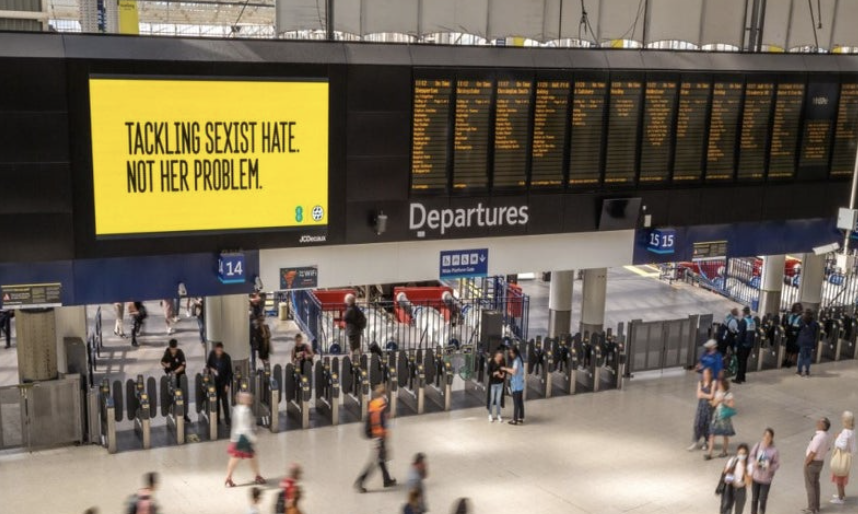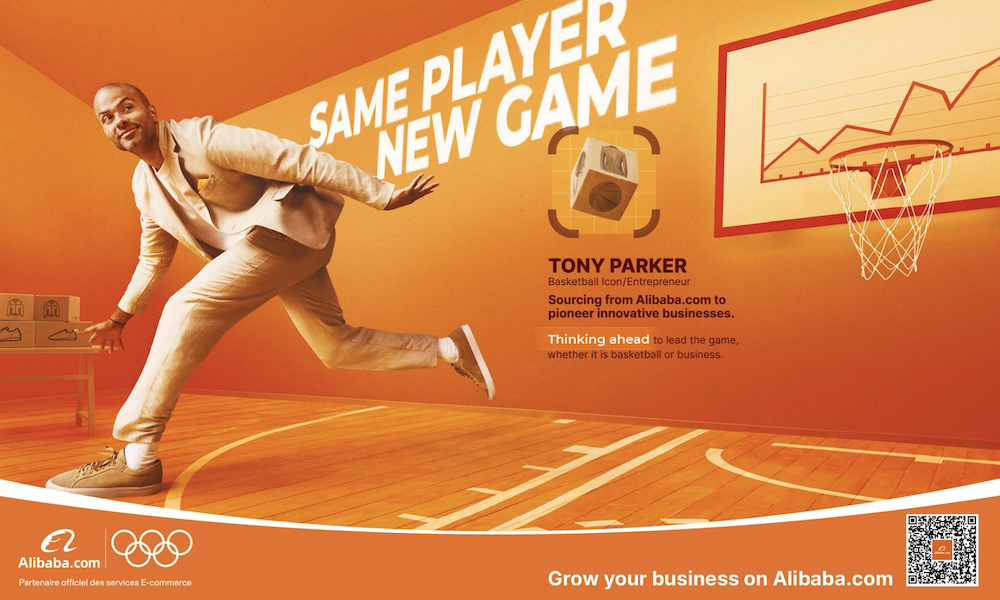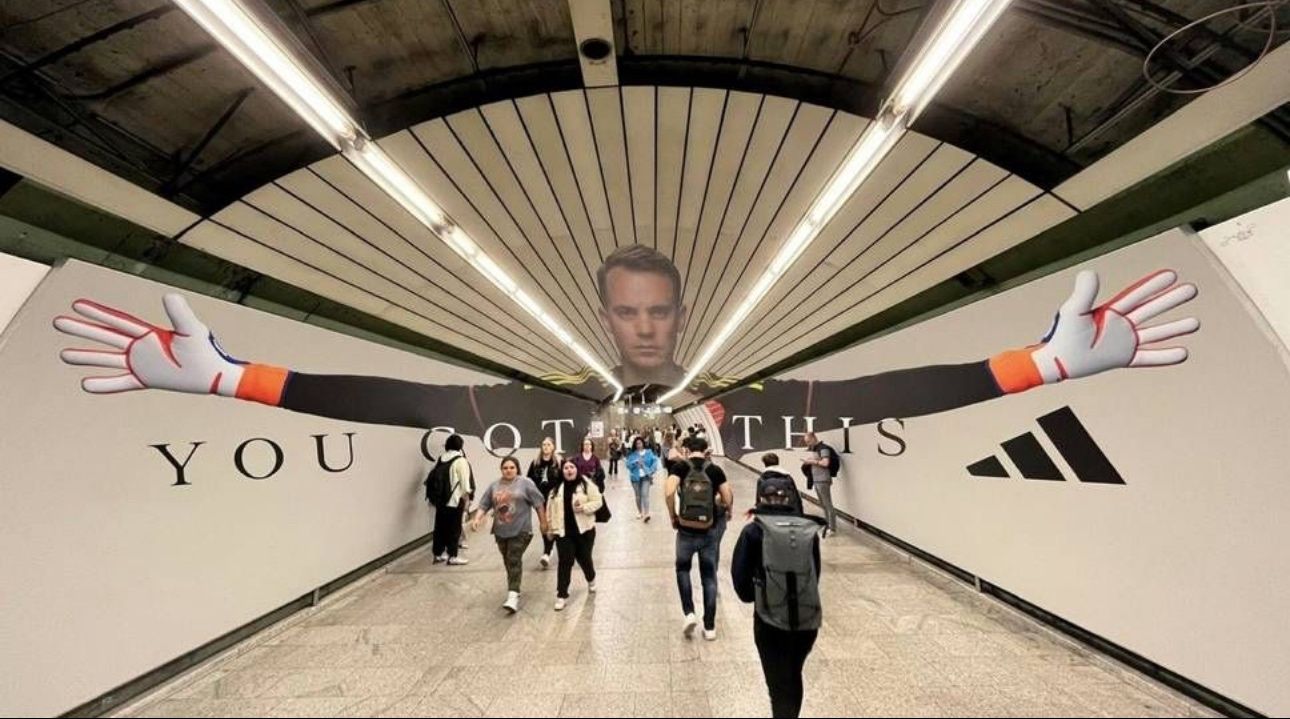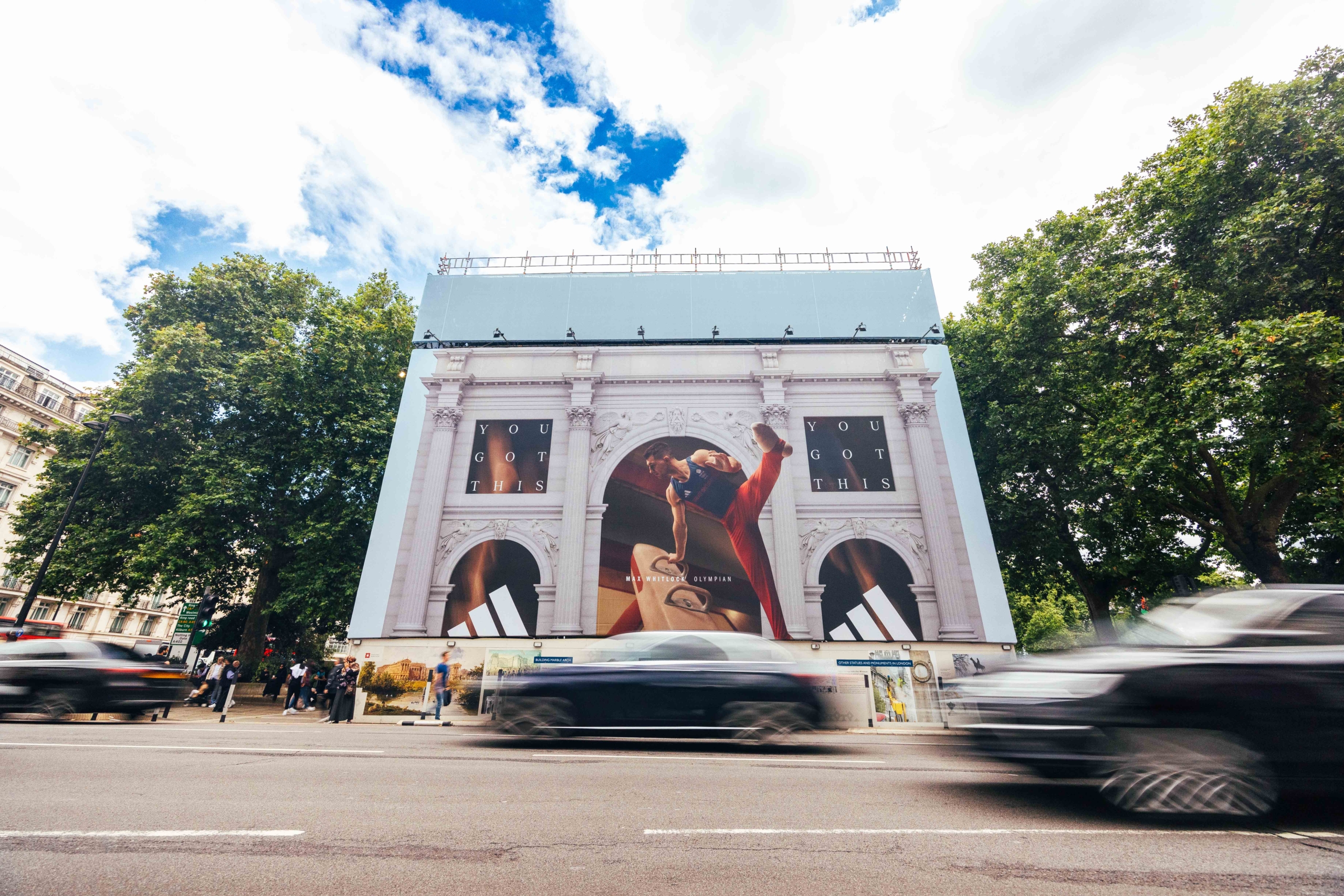2024 has been the backdrop for major sporting events like the UEFA Euros in Germany
and the Summer Olympics in France, offering brands the opportunity to leverage OOH,
writes LBB’s Olivia Atkins. Industry insiders weigh in on the effectiveness of the medium

This summer has been a landmark season for both sports and outdoor advertising.
The UEFA Euros in Germany and the Olympics in Paris have driven record high engagement,
with fans flocking to stadiums, tuning in online, and gathering around TV sets to follow the action.
This surge in viewership has naturally amplified the impact of OOH advertising.
Companies have seized this opportunity, investing over €313 million in OOH advertising during
the Euros alone, according to WallDecaux & Co, with further figures expected from the Olympics.
The influx of 2.7 million visitors to stadiums and an additional seven million guests in fan zones and
public viewings during the European Football Championship has not only boosted tourism
but also significantly bolstered the outdoor advertising sector.
OOH advertising has experienced a renaissance, capturing the attention of both local and
international audiences through large-format ads, interactive displays, and digital billboards.
These formats offer immersive and memorable brand experiences that resonate deeply with spectators.
The versatility of OOH advertising allows for creative storytelling that utilises the unique aspects of each location,
integrates interactive technology, and tailors content to reflect the host city's culture and the event's spirit.
Its undeniable presence in public spaces ensures high visibility, making it an effective medium for marketers
to communicate both commercial and social messages.
To delve deeper into the effectiveness and creative potential of OOH advertising during these major sporting events,
LBB writer Olivia speaks with industry leaders about the strategies that have made OOH a standout choice this summer.
Alex Marks, head of marketing at Posterscope:
“There is perhaps nothing more powerful on the human memory than the collective experience.
Enjoying something in the company of others can be strongly unifying, whether the outcome is positive or negative.
This summer, we had the Euro’s and now the Paris Olympics, both of which continue to generate column inches,
social media chatter, and of course, TV viewing. But it is at events such as these that the OOH medium comes to the fore.
Harnessing that dynamic atmosphere to deliver brand messages to a captive audience, that is engaged both physically and emotionally.
"OOH can be present in the moment, delivering event related messages, using dynamic triggers such as live scores
or social media comment for greater audience engagement. OOH also gives brands visibility at the event itself and to and
from the arena. It is an integral part of the experience, making it an ideal medium to influence behaviour, or tackle difficult subjects.
Our work with EE on the ‘Hope not Hate’ campaign to tackle online abuse was deliberately run around stadiums, and on local trains,
to confront people publicly, where they could discuss with others rather than hiding away.
As a result, nearly 60% of males said they felt inspired to tackle sexist hate.

"Humans are highly social animals. Yes, we spend a lot of time online, or on our phones,
but we still have the strong need to gather, and share experiences in person.
There is a certain irony that despite marketers’ mania for digital, Kantar’s Media Reactions research
in 2023 showed that the top three media channels preferred by consumers were all ones you would experience
in person - OOH and Digital OOH, alongside cinema.
So, it’s no surprise we’re seeing a rise in OOH advertising at sporting events.
Ultimately brands go where the people are, and people are outside.”
Jan Wilhelm, account director at McCann Germany says:
“Outdoor advertising continues to play an important role in brand experience,
not only during major sporting events. However, outdoor advertising is significantly more noticed
in the context of these events. This can be due to the local concentration of advertising brands
exceeding the usual level, or the recurring theme in various ads being consistent across brands.
"To stand out from the crowd, advertisers rely on particularly creative and attention-grabbing presentations,
as demonstrated by Alibaba.com with its ‘Same Player, New Game’ campaign for the 2024 Olympic Games in Paris.

"OOH is no longer just associated with large billboards. Technological innovations have enabled more targeted
content delivery through digital outdoor advertising or creative combinations of digital and print ads,
as implemented at Paris-Orly Airport for the campaign.
"An excellent selection of locations is crucial here. In collaboration with Publicis Paris,
it was possible to book high-traffic areas at airports, train stations, and in the city, with reach as the primary metric.
Therefore, comparatively expensive bookings of prestigious locations can be justified.
By choosing Tony Parker as a brand ambassador, a significant sports figure for the French and
international markets was secured. The former NBA player and current entrepreneur, along with two other athletes,
ensures that the brand is associated with the athletes through both dynamic and static assets.
Even though the measurability of (D)OOH is limited and the costs are comparatively high,
outdoor advertising at popular locations, combined with attention-grabbing creation,
can significantly increase brand awareness, especially during major sporting events.”
Pete Ioulianou and Allie Agius, senior creatives at Saatchi & Saatchi say:
“We love sport. We’d watch it 24/7 if we could, whether it’s England in a major tournament final or two far-flung
nations going at it on a badminton court in the Olympics. Sport galvanises us, and for a brief period of time,
it feels like the whole nation runs at the same frequency.
"Tapping into that emotion is advertising gold dust. But it has to be authentic otherwise, people can sniff it a mile off.
Slapping up a poster with a loose connection to a sporting event in the headline isn’t going to cut it.
OOH has always been the purest form of media. It uses a mixture of images, a few words, and some branding
to distil an entire idea in seconds. Plus, there are endless opportunities for interactive sites and special builds.
When done right, OOH has the potential to be iconic. And when you add in the context of a sporting event,
you can capture people’s attention when they’re already tuned in.
"It’s what we aimed for with our ‘Til I Died’ British Heart Foundation campaign in the lead-up to EURO 2024.
In a medium synonymous with both football culture and commemorating those who have passed,
12 beautiful murals were hand-painted in the hometowns of 12 young people who sadly died from heart disease.
The murals highlighted the shocking statistic that 12 young people are tragically lost to sudden cardiac death every week in the UK.
"OOH can also reach a wider audience online. The BHF campaign had just 12 sites,
but the power of the message, execution, and timing meant it achieved more than 300 pieces of PR coverage,
reaching millions globally. That’s the power of OOH in the context of a sporting event.
Anyway, that’s enough from us; there’s some Olympic Fencing to watch.”
Christopher Samsinger, CEO at Ocean Outdoor Germany says:
“In Germany, we have seen what I would call media stunts and some nice creative placements
on digital screens and OOH locations around the Euros.
The giant adidas billboards of the German goalkeeper Manuel Neuer appearing to leap across
the highway were phenomenal. But there was really no immersive interactivity with OOH audiences,
something Ocean is working to address next year through its sports rights partnerships.

"In Germany, I’d like to see a more continuous OOH presence throughout the year for sports
events like the Olympics and Paralympics, with brand-led content running between the summer and winter games.
It has to be broader and wider than just social media, reaching audiences at scale in public spaces.
"Next year, the Women’s Euros in Switzerland present significant creative potential. Imagine, for example, recreating the pressures of a penalty shoot-out in large format full motion or 3D DOOH. I assume the German national team will travel by train, providing plenty of opportunities for what we call Turning Spaces Into Places. Some agencies understand the creative opportunities. The majority do not. In terms of encouraging better creativity, there’s a big job still to be done.”
Source from: LBB Editorial Publication London, UK. "The Rise of OOH Advertising During Major Sporting Events in 2024" *01/08/2024*, https://lbbonline.com/news/the-rise-of-ooh-advertising-during-major-sporting-events-in-2024
2024 has been the backdrop for major sporting events like the UEFA Euros in Germany
and the Summer Olympics in France, offering brands the opportunity to leverage OOH,
writes LBB’s Olivia Atkins. Industry insiders weigh in on the effectiveness of the medium

This summer has been a landmark season for both sports and outdoor advertising.
The UEFA Euros in Germany and the Olympics in Paris have driven record high engagement,
with fans flocking to stadiums, tuning in online, and gathering around TV sets to follow the action.
This surge in viewership has naturally amplified the impact of OOH advertising.
Companies have seized this opportunity, investing over €313 million in OOH advertising during
the Euros alone, according to WallDecaux & Co, with further figures expected from the Olympics.
The influx of 2.7 million visitors to stadiums and an additional seven million guests in fan zones and
public viewings during the European Football Championship has not only boosted tourism
but also significantly bolstered the outdoor advertising sector.
OOH advertising has experienced a renaissance, capturing the attention of both local and
international audiences through large-format ads, interactive displays, and digital billboards.
These formats offer immersive and memorable brand experiences that resonate deeply with spectators.
The versatility of OOH advertising allows for creative storytelling that utilises the unique aspects of each location,
integrates interactive technology, and tailors content to reflect the host city's culture and the event's spirit.
Its undeniable presence in public spaces ensures high visibility, making it an effective medium for marketers
to communicate both commercial and social messages.
To delve deeper into the effectiveness and creative potential of OOH advertising during these major sporting events,
LBB writer Olivia speaks with industry leaders about the strategies that have made OOH a standout choice this summer.
Alex Marks, head of marketing at Posterscope:
“There is perhaps nothing more powerful on the human memory than the collective experience.
Enjoying something in the company of others can be strongly unifying, whether the outcome is positive or negative.
This summer, we had the Euro’s and now the Paris Olympics, both of which continue to generate column inches,
social media chatter, and of course, TV viewing. But it is at events such as these that the OOH medium comes to the fore.
Harnessing that dynamic atmosphere to deliver brand messages to a captive audience, that is engaged both physically and emotionally.
"OOH can be present in the moment, delivering event related messages, using dynamic triggers such as live scores
or social media comment for greater audience engagement. OOH also gives brands visibility at the event itself and to and
from the arena. It is an integral part of the experience, making it an ideal medium to influence behaviour, or tackle difficult subjects.
Our work with EE on the ‘Hope not Hate’ campaign to tackle online abuse was deliberately run around stadiums, and on local trains,
to confront people publicly, where they could discuss with others rather than hiding away.
As a result, nearly 60% of males said they felt inspired to tackle sexist hate.

"Humans are highly social animals. Yes, we spend a lot of time online, or on our phones,
but we still have the strong need to gather, and share experiences in person.
There is a certain irony that despite marketers’ mania for digital, Kantar’s Media Reactions research
in 2023 showed that the top three media channels preferred by consumers were all ones you would experience
in person - OOH and Digital OOH, alongside cinema.
So, it’s no surprise we’re seeing a rise in OOH advertising at sporting events.
Ultimately brands go where the people are, and people are outside.”
Jan Wilhelm, account director at McCann Germany says:
“Outdoor advertising continues to play an important role in brand experience,
not only during major sporting events. However, outdoor advertising is significantly more noticed
in the context of these events. This can be due to the local concentration of advertising brands
exceeding the usual level, or the recurring theme in various ads being consistent across brands.
"To stand out from the crowd, advertisers rely on particularly creative and attention-grabbing presentations,
as demonstrated by Alibaba.com with its ‘Same Player, New Game’ campaign for the 2024 Olympic Games in Paris.

"OOH is no longer just associated with large billboards. Technological innovations have enabled more targeted
content delivery through digital outdoor advertising or creative combinations of digital and print ads,
as implemented at Paris-Orly Airport for the campaign.
"An excellent selection of locations is crucial here. In collaboration with Publicis Paris,
it was possible to book high-traffic areas at airports, train stations, and in the city, with reach as the primary metric.
Therefore, comparatively expensive bookings of prestigious locations can be justified.
By choosing Tony Parker as a brand ambassador, a significant sports figure for the French and
international markets was secured. The former NBA player and current entrepreneur, along with two other athletes,
ensures that the brand is associated with the athletes through both dynamic and static assets.
Even though the measurability of (D)OOH is limited and the costs are comparatively high,
outdoor advertising at popular locations, combined with attention-grabbing creation,
can significantly increase brand awareness, especially during major sporting events.”
Pete Ioulianou and Allie Agius, senior creatives at Saatchi & Saatchi say:
“We love sport. We’d watch it 24/7 if we could, whether it’s England in a major tournament final or two far-flung
nations going at it on a badminton court in the Olympics. Sport galvanises us, and for a brief period of time,
it feels like the whole nation runs at the same frequency.
"Tapping into that emotion is advertising gold dust. But it has to be authentic otherwise, people can sniff it a mile off.
Slapping up a poster with a loose connection to a sporting event in the headline isn’t going to cut it.
OOH has always been the purest form of media. It uses a mixture of images, a few words, and some branding
to distil an entire idea in seconds. Plus, there are endless opportunities for interactive sites and special builds.
When done right, OOH has the potential to be iconic. And when you add in the context of a sporting event,
you can capture people’s attention when they’re already tuned in.
"It’s what we aimed for with our ‘Til I Died’ British Heart Foundation campaign in the lead-up to EURO 2024.
In a medium synonymous with both football culture and commemorating those who have passed,
12 beautiful murals were hand-painted in the hometowns of 12 young people who sadly died from heart disease.
The murals highlighted the shocking statistic that 12 young people are tragically lost to sudden cardiac death every week in the UK.
"OOH can also reach a wider audience online. The BHF campaign had just 12 sites,
but the power of the message, execution, and timing meant it achieved more than 300 pieces of PR coverage,
reaching millions globally. That’s the power of OOH in the context of a sporting event.
Anyway, that’s enough from us; there’s some Olympic Fencing to watch.”
Christopher Samsinger, CEO at Ocean Outdoor Germany says:
“In Germany, we have seen what I would call media stunts and some nice creative placements
on digital screens and OOH locations around the Euros.
The giant adidas billboards of the German goalkeeper Manuel Neuer appearing to leap across
the highway were phenomenal. But there was really no immersive interactivity with OOH audiences,
something Ocean is working to address next year through its sports rights partnerships.

"In Germany, I’d like to see a more continuous OOH presence throughout the year for sports
events like the Olympics and Paralympics, with brand-led content running between the summer and winter games.
It has to be broader and wider than just social media, reaching audiences at scale in public spaces.
"Next year, the Women’s Euros in Switzerland present significant creative potential. Imagine, for example, recreating the pressures of a penalty shoot-out in large format full motion or 3D DOOH. I assume the German national team will travel by train, providing plenty of opportunities for what we call Turning Spaces Into Places. Some agencies understand the creative opportunities. The majority do not. In terms of encouraging better creativity, there’s a big job still to be done.”
Source from: LBB Editorial Publication London, UK. "The Rise of OOH Advertising During Major Sporting Events in 2024" *01/08/2024*, https://lbbonline.com/news/the-rise-of-ooh-advertising-during-major-sporting-events-in-2024


